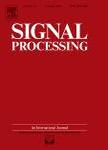版权所有:内蒙古大学图书馆 技术提供:维普资讯• 智图
内蒙古自治区呼和浩特市赛罕区大学西街235号 邮编: 010021

作者机构:Sapienza Univ Rome Dept Informat Engn Elect & Telecommun DIET I-00184 Rome Italy Univ Carlos III Madrid Dept Signal Theory & Commun Leganes 28911 Spain
出 版 物:《SIGNAL PROCESSING》 (信号处理)
年 卷 期:2017年第135卷
页 面:168-178页
核心收录:
基 金:Italian National Project "GAUChO - A Green Adaptive Fog Computing and Networking Architecture' [2015YPXH4W] Comunidad de Madrid under grant 'CASI-CAM-CM' [S2013/ICE2845] Spanish Ministry of Economy and Competitiveness [TIN2015-70308-REDT, TEC2014-52289-R] European Union MINECO project [TEC2014-52289-R] Comunidad de Madrid project PRICAM [S2013/ICE-2933]
主 题:Nonlinear Adaptive Filtering Functional Links Linear-in-the-Parameters Nonlinear Filters Sparse Adaptive Filters Combination of Filters
摘 要:Sparsity phenomena in learning processes have been extensively studied, since their detection allows to derive suited regularized optimization algorithms capable of improving the overall learning performance. In this paper, we investigate the sparsity behavior that may occur in nonlinear adaptive filtering problems and how to leverage it and develop enhanced algorithms. In particular, we focus on a particular class of linear-in-the-parameters nonlinear adaptive filters, whose nonlinear transformation is based on a functional link expansion. The analysis of the sparsity in functional links leads us to derive a family of adaptive combined filtering architectures that is capable of exploiting any sparseness degree in the nonlinear filtering. We propose two different filtering schemes based on a new block-based combined approach, well suited for sparse adaptive algorithms. Moreover, a hierarchical architecture is also proposed that generalizes the different combined schemes and does not need any a priori information about the nature of the nonlinearity to be modeled. Experimental results prove the effectiveness of the proposed combined architectures in exploiting any sparseness degree and improving the modeling performance in nonlinear system identification problems.